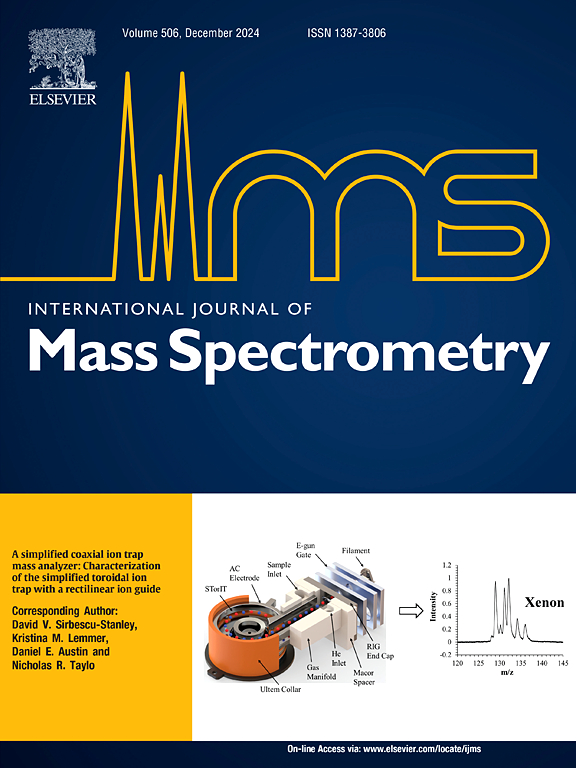用于行星科学的超分辨率编码孔径微型质谱仪概念验证
IF 1.7
3区 化学
Q3 PHYSICS, ATOMIC, MOLECULAR & CHEMICAL
引用次数: 0
摘要
质谱仪是对行星材料进行现场分析的基本仪器。理想情况下,太空飞行质谱仪的质量范围应从 10 u 到至少 500 u 不等,以便能够分析有机分子,帮助寻找生命所需的物质;能够分析碳、氮、氧、硫和惰性气体的高精度同位素比值,以了解太阳系的演变和功能;能够分辨 CO 和 N2 等低 m/z 等离子干扰,以研究行星大气。尽管自 20 世纪 70 年代以来飞行质谱技术取得了长足进步,但没有任何一款飞行质谱仪具备所有这些理想特性。在本文中,我们介绍了用于行星科学的超分辨率编码孔径摆线针微型质谱仪(SR-CAMMS)的概念验证。设计考虑因素和初步结果包括:质量范围为 10-260 u,分辨率为 0.5 u 或更高;利用采样-超分辨率解决 m/z = 28 u 处 CO 和 N2 之间的同位干扰的能力;以及获取泊松统计有限精度的同位素比的能力。因此,该仪器满足了除质量范围之外的所有设计要求,预计质量范围为 10-500 u;论文中讨论了出现这一差异的原因。本文章由计算机程序翻译,如有差异,请以英文原文为准。

A super-resolution coded aperture miniature mass spectrometer proof-of-concept for planetary science
Mass spectrometers are essential instruments for in situ analysis of planetary materials. Ideally, a space flight mass spectrometer would have a mass range from ∼10 u to at least 500 u to enable analysis of organic molecules to aid in searching for the requirements for life; capability for high precision isotope ratios of carbon, nitrogen, oxygen, sulfur, and noble gases to understand solar system evolution and functioning; and ability to resolve isobaric interferences at low m/z such as CO and N2 to study planetary atmospheres. Despite the considerable progress in flight mass spectrometry since the 1970s, no single flight mass spectrometer has all these ideal characteristics. In this paper, we present a proof-of-concept super-resolution coded aperture cycloidal miniature mass spectrometer (SR-CAMMS) for planetary science. Design considerations and preliminary results are presented including: a mass range of 10–260 u with resolution of 0.5 u or better; the ability to resolve the isobaric interference between CO and N2 at m/z = 28 u using sampling-super resolution; and the ability to acquire isotope ratios with Poisson statistics limited precision. Thus, the instrument met all design considerations except mass range, which was expected to be 10–500 u; reasons for this discrepancy are discussed in the paper.
求助全文
通过发布文献求助,成功后即可免费获取论文全文。
去求助
来源期刊
CiteScore
3.60
自引率
5.60%
发文量
145
审稿时长
71 days
期刊介绍:
The journal invites papers that advance the field of mass spectrometry by exploring fundamental aspects of ion processes using both the experimental and theoretical approaches, developing new instrumentation and experimental strategies for chemical analysis using mass spectrometry, developing new computational strategies for data interpretation and integration, reporting new applications of mass spectrometry and hyphenated techniques in biology, chemistry, geology, and physics.
Papers, in which standard mass spectrometry techniques are used for analysis will not be considered.
IJMS publishes full-length articles, short communications, reviews, and feature articles including young scientist features.

 求助内容:
求助内容: 应助结果提醒方式:
应助结果提醒方式:


